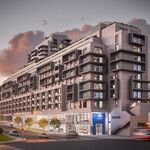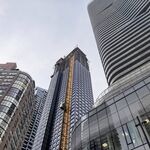Okay, time for some good old-fashioned side-by-side comparisons; gents take out your calculators.
 http://www3.ttc.ca/PDF/Transit_Planning/service_improvements_2008.pdf
http://www3.ttc.ca/PDF/Transit_Planning/service_improvements_2008.pdf
- Route
- Mode/note
- Customers per day, Mon-Fri
- Vehicles in morning peak period
- Vehicles in afternoon peak period
- Hours per day, Mon-Fri
- Kms per day, Mon-Fri
- Cost per day, Mon-Fri
Streetcar: 501 QUEEN SC 43,500 31 31 530 8,500 $87,500
Bus: 29 DUFFERIN 43,600 32 28 450 7,400 $49,300
As you can see, this bus route carries slightly more people; one more bus trip in the morning peak but 3 less in the afternoon peak than the streetcar conserving the needed manpower required to operate those buses. The 29 runs along a denser corridor throughout (it matters not that the 501 covers 1100 more kms overall with long low-density stretches like High Park-Humber Bay included). But where they really differ dramatically is in their operational costs per day. I see a whooping
$38,200 discrepancy, making diesel-chugging buses by far the least expensive to operate and maintain (and enviro-safe CNG or fuel-cell ran buses are always an option and several modern bus makes have life-spans in excess of 30 years). When was the last time a bus corridor needed to be partially shut down for a whole summer or years on end for maintenance and repairs? I rest my case.
Actually no, here's some more examples of how the bus is king and if placed into their own dedicated ROWs would always run at averages of 35kmph NOT a lousy 22kmph:
Highest daily used streetcar route 504 KING and 508 LAKE SHORE
53,100 51 38 540 7,400 $96,000
Highest daily used bus route 39 FINCH EAST and 139 FINCH-DON MILLS
44,600 52 41 620 14,000 $74,000
= 39/139 has double the daily total mileage, has around the same number of daily drivers required but costs $22,000 less to operate.
506 CARLTON SC 41,200 34 29 440 6,500 $75,400
25 DON MILLS (1) 40,600 31 27 410 8,100 $47,000
= 25 Don Mills costs $28,400 less to operate daily with even less drivers required to operate vehicles.
If the TTC took a page from York Region and Mississauga and started to incoporate articulated buses into its fleet then the issue of total number of manned buses dissipates. If the TTC found other ways to cut costs like I dunno, stop building underground mausoleums in locations where less than 5000 walk-ins per day will actually see them, then having to pay drivers would be the least of their worries.




